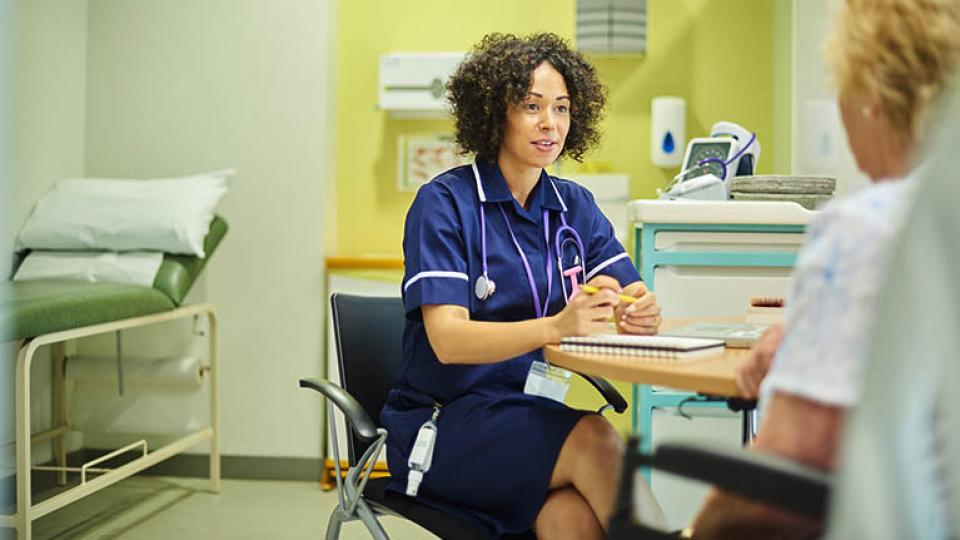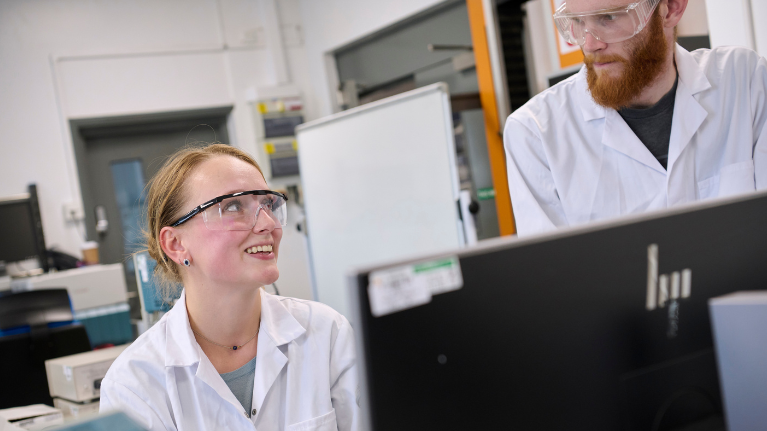
How do we ensure that older people in care settings are well hydrated?
Introduction
Older people often do not drink enough, and this makes them vulnerable to infection and has other harmful effects on their health. Our researchers have been working on ways to encourage older people to drink more.
The problem
The research team noticed the sharp increase in infections of the bloodstream that affect older people during the summer months. Most of these infections start in the urinary tract and could be triggered by dehydration.
The team set out to explore whether poor fluid intake was contributing to the problem by looking at the care of older people living in care homes. They found that the amount they drank was startlingly low.
In a care home, older people are dependent on carers to provide drinks. They often need support and encouragement to drink because they may lose their sense of thirst, it may be more difficult for them to hold a cup or swallow and they may be worried about being incontinent or falling on the way to the toilet.
The researchers found a key problem in the care homes was that residents were offered a drink at set times but this was not enough for them to consume even the minimum of 1500mls during the day. Residents who needed help to hold the cup, or prompting to take a drink, consumed even less because the staff were often busy doing other tasks when drinks were being distributed.
These findings led the research team to develop practical ways that staff could increase the amount of fluid that residents drank and reduce the risk they would become dehydrated.
One strategy that worked well was creating ‘protected drinks times’ – these are defined points in the day when all the care staff would focus on distributing drinks, helping residents to drink and ensuring they were offered ‘top-ups’.
Another simple measure was increasing the range of different drinks that residents were offered – they especially liked different fruit juices as they have a pleasant and strong flavour, but other hot drinks such as Horlicks and hot chocolate were popular too.
Implementing change
The research also found that the cups used in the care homes were sometimes difficult for residents to hold as some were too heavy with a tiny handle and as they were quite small, didn’t give residents the opportunity to drink much tea or coffee. Changing to lighter, larger mugs with big handles not only increased the amount of fluid residents consumed but enabled more of them to drink independently.
I-Hydrate Resource Pack provides information on all these strategies for those working in care settings. It also has ideas for finding out about how much residents drink and their likes and dislikes and useful information to support staff training.
In care homes where these strategies have been implemented, the team have seen promising results. Fewer UTIs and a reduced need for laxatives are just some indicators that hydration strategies are having a positive impact.
The team are now working on assessing how the design of drinking vessels affects the way that older people drink. This will help us to understand what improvements could be made to the design of cups and mugs to make drinking easier.
The research team and other collaborators
- Alastar Yoxall
- Jennifer Rowson
- William Sellers
Find out more
Find out more
-
Research Centres and Groups
Find out about our multi-disciplinary areas of expertise, PhD research, and teaching.
-
Research impact
Learn how our PhD research has helped communities locally, nationally and internationally.
-
The Graduate School
If you are interested in studying for a PhD or Professional Doctorate, the Graduate School is here to support your research.









